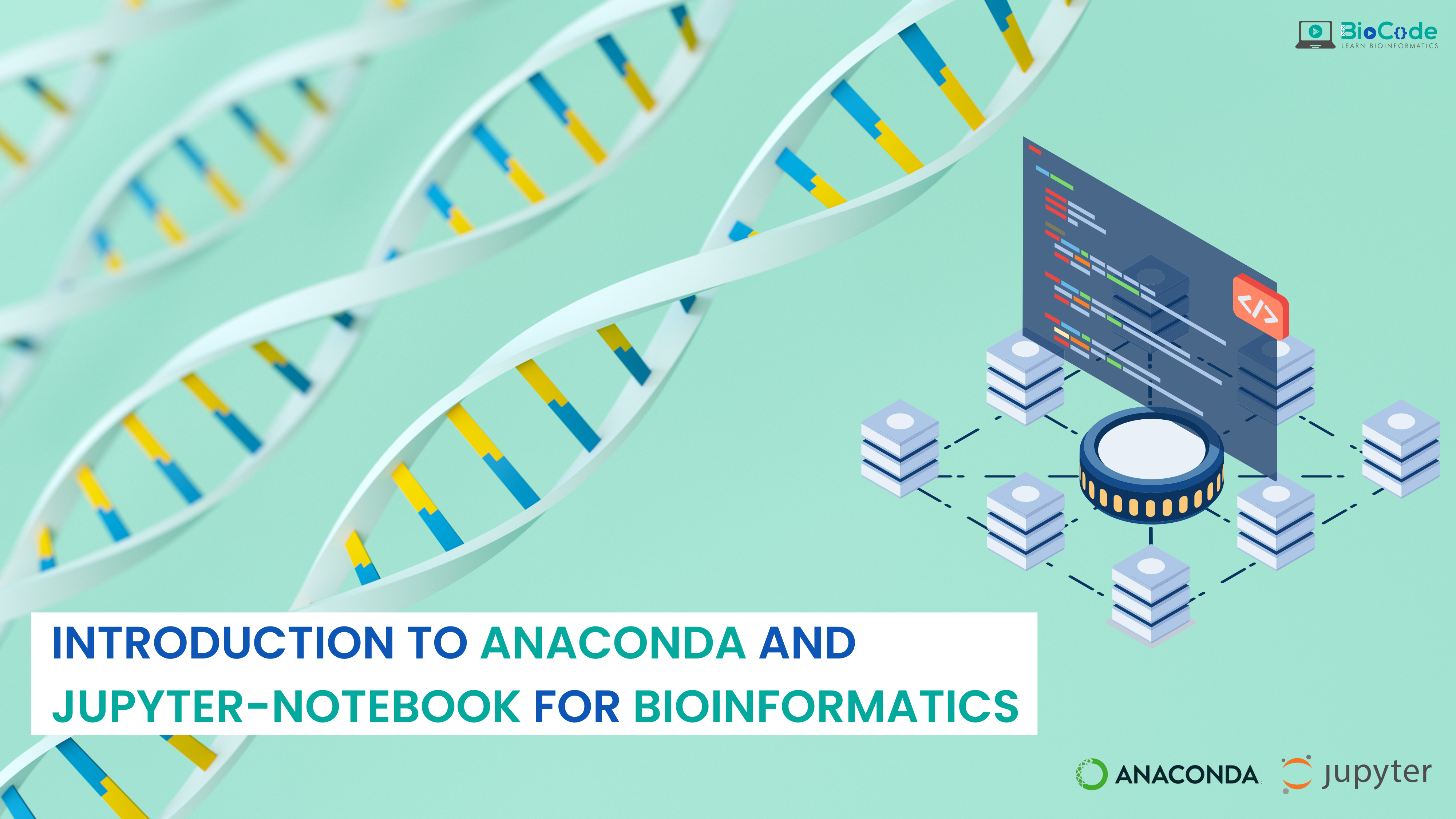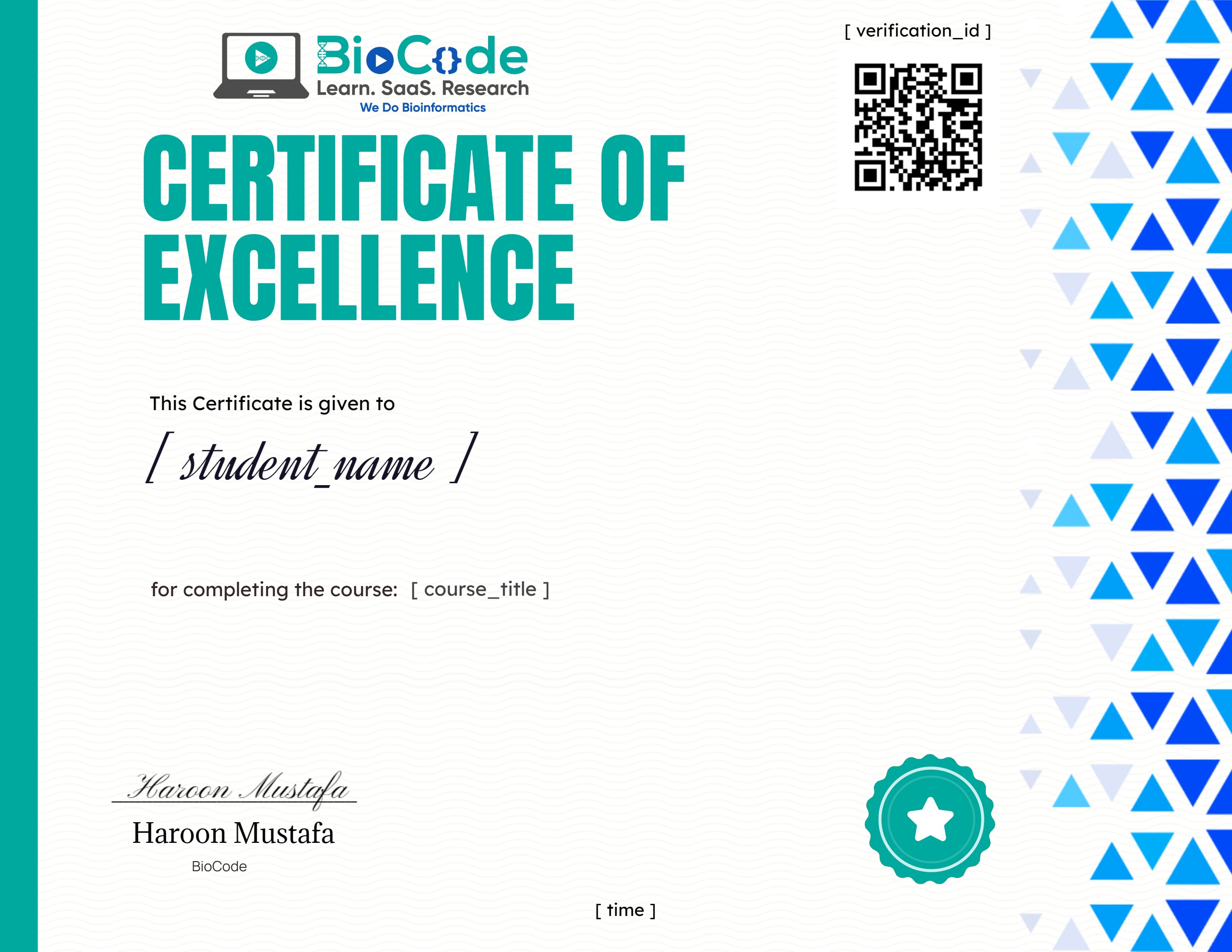Introduction to Anaconda and Jupyter-Notebook for Bioinformatics

About Course
Introduction to Anaconda and Jupyter-Notebook for Bioinformatics
Bioinformaticians develop systems, databases and pipelines to collect and analyse biological data for clinical or research purposes. They use a variety of bioinformatics packages and work across multiple OS systems such as linux and windows. Hence, they need a system from where they can install, update, remove, and build these tools and packages without platform dependency. Anaconda brings forth a solid solution by providing an integrative environment.
Anaconda is an integrative system which provides a flexible and powerful approach for choosing appropriate analysis methods and tools, managing data quality and integrity, and handling complex datasets. It helps bioinformaticians in creating and managing separate environments to avoid conflict among different platforms. Anaconda is based on Python and R packages for the analysis of scientific, large-scale data. Bioinformaticians also commonly use Bioconda, which add channels to Conda with bioinformatics tools (such as the popular sequence alignment tool BWA).
One of the most tedious tasks for a bioinformatician is the work of cleaning and organizing biological data. Data cleaning is a time-consuming process that requires your biological data to be organized in such a way that the portions of the dataset that you do not want can be easily identified and removed before you can begin using the biological data to perform your bioinformatics analysis. A number of scientific computing notebooks are available that allows you to work on all stages of the data analysis process on one interactive page but the most popular by far is the Jupyter Notebook.
Since the Jupyter Notebook is compatible with multiple tools, it can also be used to streamline the process of biological data organization and cleaning. Jupyter Notebook gives users the option to run a section of code without executing the entire program, in order to determine if it works before moving on to writing the next line of code. Once you have cleaned, organized, and analyzed your biological data, Jupyter Notebook can be used for biological data visualization and sharing. Jupyter Notebook allows users to compile all aspects of a data project in one place thus making it easier for bioinformaticians to work on a massive project.
BioCode is offering a course on Introduction to Anaconda and Jupyter-notebook. First, the student is introduced to an in-depth understanding of Anaconda, its applications in Bioinformatics, and why the student should use it for their bioinformatics analysis. The installation guidance for Anaconda is also given. Then, the student is introduced to Jupyter-Notebook and its use cases for Bioinformatics analysis. Proper installation and step-by-step guidance on Jupyter-Notebook are given on how to write your install and how to write your first script. This course is for absolute beginners in bioinformatics scripting and you don’t require any prior knowledge of scripting or even bioinformatics to get started with this course.
This course will include the following sections:
Section 1: Introduction to Anaconda and Jupyter Notebook for Bioinformatics
Description: This section will focus on making sure that the students gain an understanding of why an integrative environment like Anaconda is important for performing bioinformatics analysis. Students will learn various benefits and uses of Anaconda for bioinformaticians and how Anaconda is installed. This section will also make sure that the students learn about the need for a platform like Jupyter Notebook and how it helps bioinformaticians in biological scripting.
Learning Outcomes: Upon completion of this section, students will be able to:
- Discuss Anaconda.
- Describe the Applications of Anaconda in Bioinformatics.
- Discuss Jupyter Notebook and its Use Cases for Bioinformatics Analysis.
- Install Anaconda.
Section 2: Hands-on Guide On Jupyter Notebook
Description: This section will focus on making sure that the students learn how the Jupyter Notebook is installed. Students will learn how to use Jupyter Notebook for biological scripting. Students will learn how to create customized scripts in Jupyter Notebook. By the end of this section, students will be able to perform their bioinformatics analysis on Jupyter Notebook.
Learning Outcomes: Upon completion of this section, students will be able to:
- Install Jupyter-Notebook.
- Create Customized Scripts Using Jupyter Notebook.
- Perform Bioinformatics Analysis Using Jupyter Notebook.

Course Content
Anaconda and Jupyter-Notebook for Bioinformatics
-
Introduction to Anaconda and Jupyter-Notebook for Bioinformatics
22:46
Hands-on Jupyter-Notebook
Earn a certificate
Add this certificate to your resume to demonstrate your skills & increase your chances of getting noticed.

Student Ratings & Reviews

